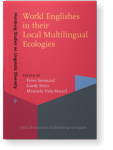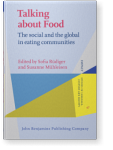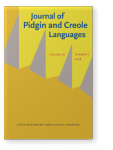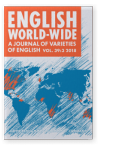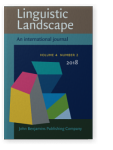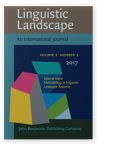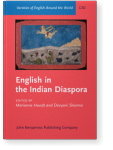Jakob R.E. Leimgruber
List of John Benjamins publications for which Jakob R.E. Leimgruber plays a role.
2025 Chapter 14. Discourse-pragmatic like in East Asian Englishes: Focus on Taiwan World Englishes in their Local Multilingual Ecologies, Siemund, Peter, Gardy Stein and Manuela Vida-Mannl (eds.), pp. 317–335 | Chapter
The multilingual ecology of Taiwan includes the official language Mandarin, the vernaculars Hokkien and Hakka, as well as several aboriginal Austronesian languages. In this context, English has emerged as an important additional language, not least in the education system. Research on English in… read more
2020 Chapter 12. Naming practices in Singapore’s hawker centres: Echoes of itineracy Talking about Food: The social and the global in eating communities, Rüdiger, Sofia and Susanne Mühleisen (eds.), pp. 235–256 | Chapter
A hawker is an itinerant salesperson, formerly typically
ubiquitous in most urban environments. Despite the popular and
useful services they provide, they are often viewed with suspicion.
Starting in the 1960s, the government of Singapore has begun to
sedentarise the trade into purpose-built… read more
2018 Singaporean internet chit chat compared to informal spoken language : Linguistic variation and indexicality in a language contact situation Journal of Pidgin and Creole Languages 33:1, pp. 48–91 | Article
This paper compares data from a Singaporean chit chat forum to informal spoken data. We first perform a qualitative analysis of text samples in a framework of indexicality. Then we present quantitative findings for two (sets of) features each of the contact variety Singlish (particles, the… read more
2018 Itineracy immobilised: The linguistic landscape of a Singaporean hawker centre Linguistic Landscape 4:2, pp. 178–199 | Article
A famous element in Singapore’s food culture is the hawker centre, consisting of a large collection of individually-run stalls selling various kinds of foods and drinks. These centres, which dot the island and its public housing estates, were built on government initiative beginning in the… read more
2017 Using eye tracking to investigate what bilinguals notice about linguistic landscape images: A preliminary study Methodology in Linguistic Landscape Research, Blackwood, Robert (ed.), pp. 226–245 | Article
In daily life, we experience dynamic visual input referred to as the “linguistic landscape” (LL), comprised of images and text, for example, signs, and billboards (Gorter, 2013; Landry & Bourhis, 1997; Shohamy, Ben-Rafael and Barni 2010). While much is known about LLs descriptively, less is… read more
2014 Imperfectives in Singapore’s Indian community English in the Indian Diaspora, Hundt, Marianne and Devyani Sharma (eds.), pp. 105–130 | Article
This chapter examines the sociolinguistics of the Indian community in Singapore, with a particular emphasis on the use of the -ing marker among Tamils. The Indian diaspora in Singapore is of interest because the community differs from others in many respects: although a minority of less than 10… read more
2013 The management of multilingualism in a city-state: Language policy in Singapore Multilingualism and Language Diversity in Urban Areas: Acquisition, identities, space, education, Siemund, Peter, Ingrid Gogolin, Monika Edith Schulz and Julia Davydova (eds.), pp. 227–256 | Article
Language policy in Singapore exists against a background of large diversity, a diversity that has been present in the city-state ever since its founding, and which is manifest both in ethnic and in linguistic terms. The government deals with this diversity in several ways: firstly, in giving… read more
